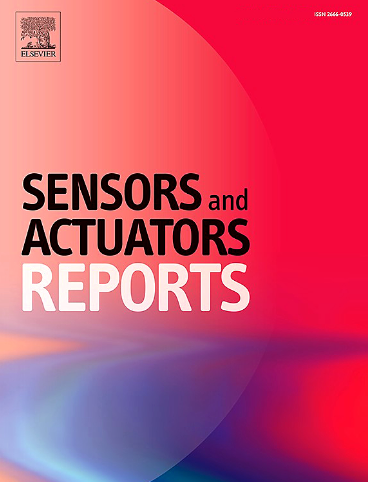Laccase-mimicking Cu@CDs-enabled bioinspired immunosensor using CuO nanoparticles for voltametric detection of serum thyroxine level in patients with hyperthyroidism or hypothyroidism
IF 7.6
Q1 BIOTECHNOLOGY & APPLIED MICROBIOLOGY
引用次数: 0
Abstract
In this study, for the first time, a voltammetric bioinspired immunosensor was fabricated to determine free thyroxine (T4) based on the blocking nanozyme-dependent signaling pathway through masking the active sites of the laccase-mimicking Cu-doped CDs (Cu@CDs). The focus shifted to monitoring a vital biomarker for thyroid diseases using a metal-containing nanozyme, showcasing high potential to catalyze the oxidation of phenolic compounds. Thanks to the active sites of Cu@CD nanozyme, the electrocatalytic oxidation of hydroquinone (HQ), as a signal probe, was performed at a high rate. The CuO nanostructures also increased the conductivity as well as specific surface area of electrode. Despite signal amplification of HQ, the binding of antibody to carbon dot reduced enzymatic activity of nanozyme and subsequently resulted in a considerable decrease in the current intensity of GCE/CuO nanoparticles/Cu@CDs-HQ. The bioconjugation of T4 with anti-T4 antibody resulted in the further coverage of the active sites of nanozyme. Therefore, the current of GCE/CuO nanoparticles/Cu@CDs-HQ/Ab decreased proportionally to the T4 concentration in a DLR (dynamic linear range) of 10.0 pM-8.0 nM which comprises the reference range for free T4 (11.5–22.7 pM). The LOD (limit of detection) of 2.8 pM, was lower compared to the values reported in previous studies. Furthermore, this study exhibited the key finding that the highly specific interaction of T4 with immobilized antibody led to a remarkable diminish in the immunosensor signal compared to the interferers. More importantly, spike-recovery studies demonstrated the high potential of the designed immunosensor to detect serum T4 levels in patients with hyperthyroidism or hypothyroidism.

漆酶模拟Cu@CDs-enabled生物启发免疫传感器使用氧化铜纳米粒子用于甲状腺机能亢进或甲状腺机能减退患者血清甲状腺素水平的伏安检测
在这项研究中,首次制造了一种伏安生物激发免疫传感器,通过屏蔽模拟漆酶的cu掺杂CDs的活性位点,阻断纳米酶依赖的信号通路,来检测游离甲状腺素(T4) (Cu@CDs)。重点转移到使用含金属纳米酶监测甲状腺疾病的重要生物标志物,显示出催化酚类化合物氧化的高潜力。由于Cu@CD纳米酶的活性位点,对苯二酚(HQ)作为信号探针的电催化氧化得以高速进行。氧化铜纳米结构还提高了电极的电导率和比表面积。尽管HQ的信号放大,抗体与碳点的结合降低了纳米酶的酶活性,随后导致GCE/CuO纳米颗粒的电流强度显著降低/Cu@CDs-HQ。T4与抗T4抗体的生物偶联导致纳米酶活性位点的进一步覆盖。因此,GCE/CuO纳米颗粒/Cu@CDs-HQ/Ab的电流在10.0 pM-8.0 nM的DLR(动态线性范围)内与T4浓度成比例降低,DLR(动态线性范围)包含游离T4参考范围(11.5-22.7 pM)。检出限(LOD)为2.8 pM,低于以往研究报告的值。此外,本研究还发现,与干扰素相比,T4与固定化抗体的高度特异性相互作用导致免疫传感器信号显著减弱。更重要的是,针刺恢复研究表明,所设计的免疫传感器在检测甲状腺功能亢进或甲状腺功能减退患者的血清T4水平方面具有很高的潜力。
本文章由计算机程序翻译,如有差异,请以英文原文为准。
求助全文
约1分钟内获得全文
求助全文
来源期刊

Sensors and Actuators Reports
Multiple-
CiteScore
9.60
自引率
0.00%
发文量
60
审稿时长
49 days
期刊介绍:
Sensors and Actuators Reports is a peer-reviewed open access journal launched out from the Sensors and Actuators journal family. Sensors and Actuators Reports is dedicated to publishing new and original works in the field of all type of sensors and actuators, including bio-, chemical-, physical-, and nano- sensors and actuators, which demonstrates significant progress beyond the current state of the art. The journal regularly publishes original research papers, reviews, and short communications.
For research papers and short communications, the journal aims to publish the new and original work supported by experimental results and as such purely theoretical works are not accepted.
 求助内容:
求助内容: 应助结果提醒方式:
应助结果提醒方式:


